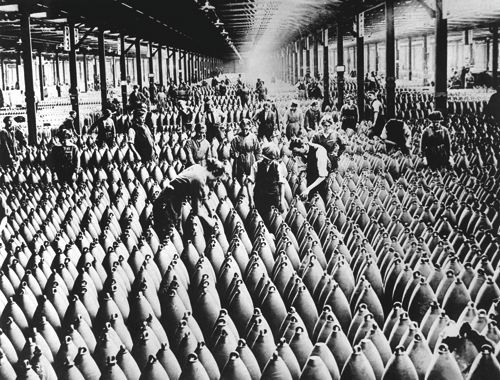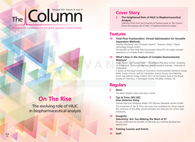The Impact of WWI Munitions on Modern Agricultural Produce
Researchers from ANSES have investigated the human health risks related to the consumption of foodstuffs produced on sites polluted by munitions from the First World War using GC–MS, HPLC–ICP-MS, and UHPLC–MS.
Photo Credit: Everett Historical/Shutterstock.com

Researchers from the French Agency for Food, Environmental, and Occupational Health & Safety (ANSES) have investigated the human health risks related to the consumption of foodstuffs produced on sites polluted by munitions from the First World War using gas chromatography–mass spectrometry (GC–MS), high performance liquid chromatography inductively coupled plasma mass spectrometry (HPLC–ICP-MS), and ultrahigh-pressure liquid chromatography–mass spectrometry (UHPLC–MS) (1).
Despite almost a century passing since its end, the effects of the Great War continue to linger upon on its battlefields. An estimated 1 billion shells and projectiles were fired during the conflict, which lasted from 28 July 1914 to 11 November 1918, containing a variety of high explosives as well as a wide variety of chemicals including toxic warfare agents and incendiary agents.
The use of chemical agents occurred on both sides of the conflict and when the armistice was made “permanent” the respective parties each had large quantities of unfired munitions remaining. The removal and destruction proved to be a staggering task, and despite hundreds of thousands of tonnes of weapons being dumped in the Northern European Seas, upwards of 1.7 billion tonnes of ammunitions remained in dumps as surpluses.
The sites at which the ammunitions were destroyed subsequently became contaminated, with the largest of these sites, the “Clere & Schwander Meuse” complex, covering over 100 hectares of land. This land has since been developed into farmland and grasslands, with cereals for human consumption and maize for animal consumption being produced. Research performed by the French Bureau of Geological and Mining Research (BRGM) found nitrates, zinc, arsenic, organo-arsenical agents, tetrabromethane, and high levels of nitroarmomatic compounds at the site (BRGM,2015). ANSES was requested to determine whether the consumptions of products originating from the area were safe for consumers.
Using GC–MS, HPLC–ICP-MS, and UHPLC–MS, researchers analyzed food products harvested from the land and determined that exposure to the majority of contaminants through the consumption of foodstuffs produced locally on the site was unlikely to be a health concern. However, it was suggested that certain plots should not be used to grow cereals given the presence of zones highly contaminated with inorganic arsenic.
Furthermore, the researchers highlighted several areas requiring further investigation, including the transfer of soil contaminants to plants and from animal feed to animals. The contamination of surface water and ground water requires further consideration as well as the deep soil and the impact of munition dumping within the oceans. Issues were also raised regarding toxicological benchmarks selected by default in the absence of health-based guidance values. This research highlights that the legacy of the Great War’s munitions destruction is not yet fully comprehended.
Reference
- S. Gorecki et al., Sci. Total Environ.599–600, 314–323 (2017).

Characterizing Plant Polysaccharides Using Size-Exclusion Chromatography
April 4th 2025With green chemistry becoming more standardized, Leena Pitkänen of Aalto University analyzed how useful size-exclusion chromatography (SEC) and asymmetric flow field-flow fractionation (AF4) could be in characterizing plant polysaccharides.
Investigating the Protective Effects of Frankincense Oil on Wound Healing with GC–MS
April 2nd 2025Frankincense essential oil is known for its anti-inflammatory, antioxidant, and therapeutic properties. A recent study investigated the protective effects of the oil in an excision wound model in rats, focusing on oxidative stress reduction, inflammatory cytokine modulation, and caspase-3 regulation; chemical composition of the oil was analyzed using gas chromatography–mass spectrometry (GC–MS).











